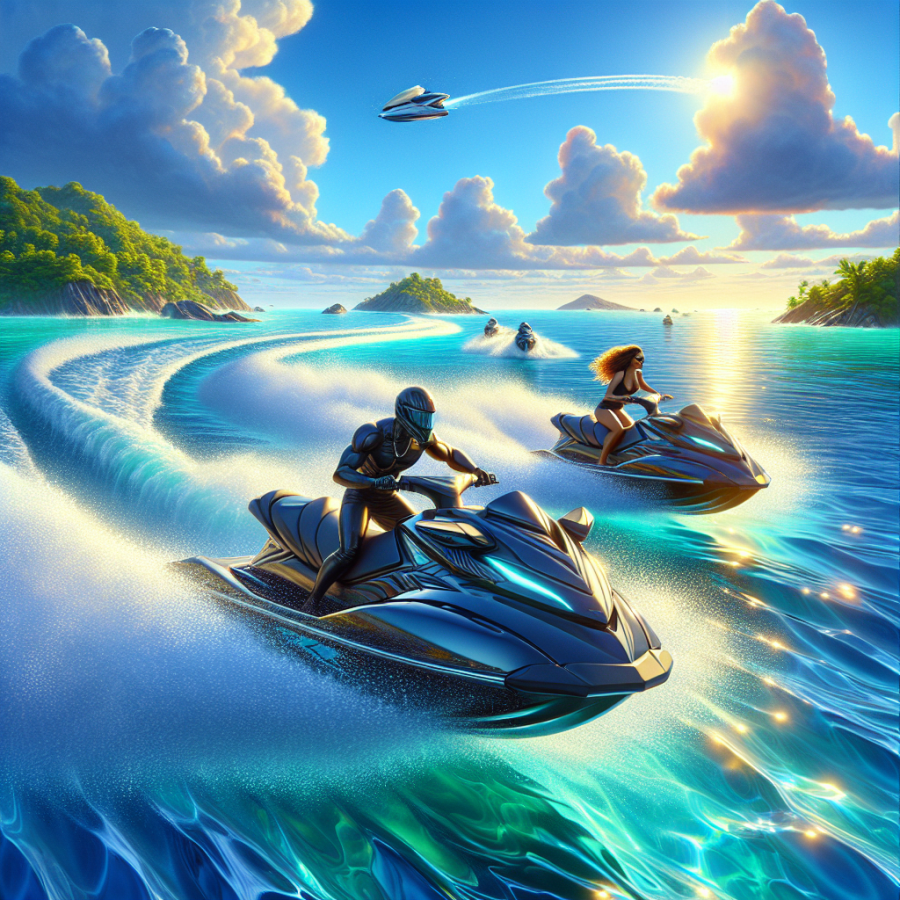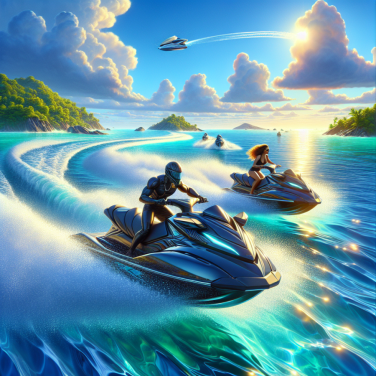Navigating the Waves: Unleashing the Excitement on Personal Watercrafts
The audible rush of water, the spray on your skin, and the thrill of speed on the open lake or ocean -- personal watercraft (PWC) adventures offer an unparalleled excitement for thrill-seekers and water enthusiasts alike. As the popularity of these versatile aquatic machines continues to soar, it's essential for both rookies and veterans to understand how to maximize enjoyment while ensuring safety and respecting the environment.
**Mastering the Machine**
Getting to grips with how personal watercraft operate is the first step in unleashing their potential for adventure. Modern PWCs are incredibly user-friendly, but they do require some practice to handle effectively. When beginning, it’s important to start in calm water to get the feel for the throttle response, steering and stopping distances. Practice sharp turns, quick stops, and maneuvers like reversing to gain confidence.
**Safety First**
Before hitting the water, make sure you have the necessary safety equipment. This includes a well-fitted life jacket, a safety whistle or horn, and if needed, a wetsuit for thermal protection. Additionally, familiarize yourself with the local safety regulations, which may include speed limits, no-go areas, and wildlife protection zones. The exhilaration of riding a PWC should never compromise personal safety or that of others.
**Tackling Different Waters**
Whether carving through the wakes on a serene lake or braving the more challenging ocean waves, understanding the different conditions is crucial. On the ocean, riders must be mindful of the tides, current, and wind, which can significantly affect the dynamic of the ride. In contrast, while lakes offer a typically smoother ride, attention must be paid to other watercraft and fixed obstacles like buoys or docks.
**Exploring New Horizons**
Personal watercrafts open up a world of exploration. They can access secluded beaches, coves, and islands that are often unreachable to larger boats. Adventurers can pack a waterproof bag with supplies and set off to discover hidden gems of the coastline or lake shores. However, it’s essential to be mindful of fuel ranges and to carry navigation equipment, such as a GPS or charts, to avoid getting lost.
**Maintenance and Environmental Stewardship**
Proper maintenance ensures that the PWC will be ready for adventure when you are. Routine checks include the condition of the hull, the engine, the fuel system, and the battery. But beyond upkeep, riders should also consider their environmental impact.
Read also:
Gliding on Wheels: An Exciting Journey into the World of Skate Racing
Safety Meets Adrenaline: Essential Tips for an Exhilarating Watercraft Experience
When it comes to combining the exhilaration of speed with the serene beauty of water, few activities can match riding a personal watercraft (PWC). Whether you’re skimming across the glassy surface of a calm lake or bouncing over the waves in the ocean, safety must be a top priority to ensure that your adventure remains not only thrilling but also free from harm. Here are some essential tips to bear in mind as you prepare for your watercraft experience.
**Understand Your Equipment:** Before you hit the water, take the time to familiarize yourself with the PWC. Know where the throttle and brake are, understand how to steer, and be aware of how the watercraft operates in different water conditions. Read the manual, and if possible, attend a hands-on training session. A well-informed rider is a safer rider.
**Wear a Life Jacket:** This cannot be understated. No matter how strong a swimmer you are, a life jacket is essential. Should you fall off your PWC, a life jacket will keep you afloat, conserving your energy and potentially saving your life. Ensure that the life jacket is U.S. Coast Guard-approved and fits snugly.
**Avoid Alcohol and Drugs:** Watercraft operation requires sharp reflexes, clear vision, and good judgment. Alcohol and drugs impair these faculties, increasing the risk of accidents. Always ride sober to maintain control of your watercraft and protect yourself and others around you.
**Take Weather Conditions Into Account:** Check the weather forecast before you plan your outing. High winds, rough waters, and storms can transform an exciting ride into a dangerous situation very quickly. It’s best to ride in conditions that match your skill level and comfort.
**Maintain a Safe Speed:** Speed on the water feels vastly different from speed on land. Travelling too fast increases the risk of losing control, especially if you need to make sudden maneuvers. Keep at a pace where you feel in control and can respond effectively to any unexpected obstacles or changes in the water’s surface.
**Respect Boundaries and Local Regulations:** Each area will have its own rules that govern the use of personal watercraft. These may include speed limits, no-go areas, and distance from shore requirements. Ignoring these regulations can lead to dangerous interactions with other water users, wildlife disturbances, and legal consequences.
**Keep a Safe Distance:** Always keep a comfortable distance from other watercraft, swimmers, and objects.




